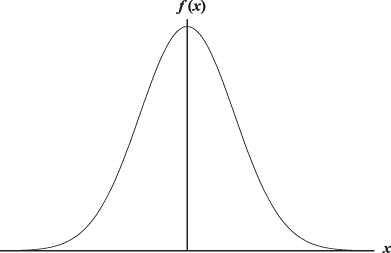CHAPTER 25ANALYSIS OF ADJUSTMENTS
25.1 INTRODUCTION
The initial adjustment of data is not the end of the adjustment. Rather, it is the beginning of the analysis process. Throughout this book, the mechanics of performing a least squares adjustment properly have been discussed. Additionally, statistical methods were introduced to analyze the quality of observations. As in Chapter 21, this chapter will explore the procedures used in analyzing the residuals of the observations in the adjustment.
25.2 BASIC CONCEPTS, RESIDUALS, AND THE NORMAL DISTRIBUTION
![]() The normal distribution and statistical testing were introduced in the early chapters of this book using simple sets of data. These basic concepts also apply in the analysis of data after an adjustment. When viewing Figure 25.1, four guiding principles are used in analyzing observations from normally distributed data:
The normal distribution and statistical testing were introduced in the early chapters of this book using simple sets of data. These basic concepts also apply in the analysis of data after an adjustment. When viewing Figure 25.1, four guiding principles are used in analyzing observations from normally distributed data:

FIGURE 25.1 The normal distribution.
- Data tend to be clustered around a single value.
- Errors tend to be distributed about this value equally.
- Errors are distributed in sign equally.
- Most errors tend to be small in magnitude and errors large in magnitude seldom occur.
At the conclusion of a least squares adjustment, the residuals in the observations should be scanned and analyzed in an attempt to locate outliers ...
Get Adjustment Computations, 6th Edition now with the O’Reilly learning platform.
O’Reilly members experience books, live events, courses curated by job role, and more from O’Reilly and nearly 200 top publishers.

